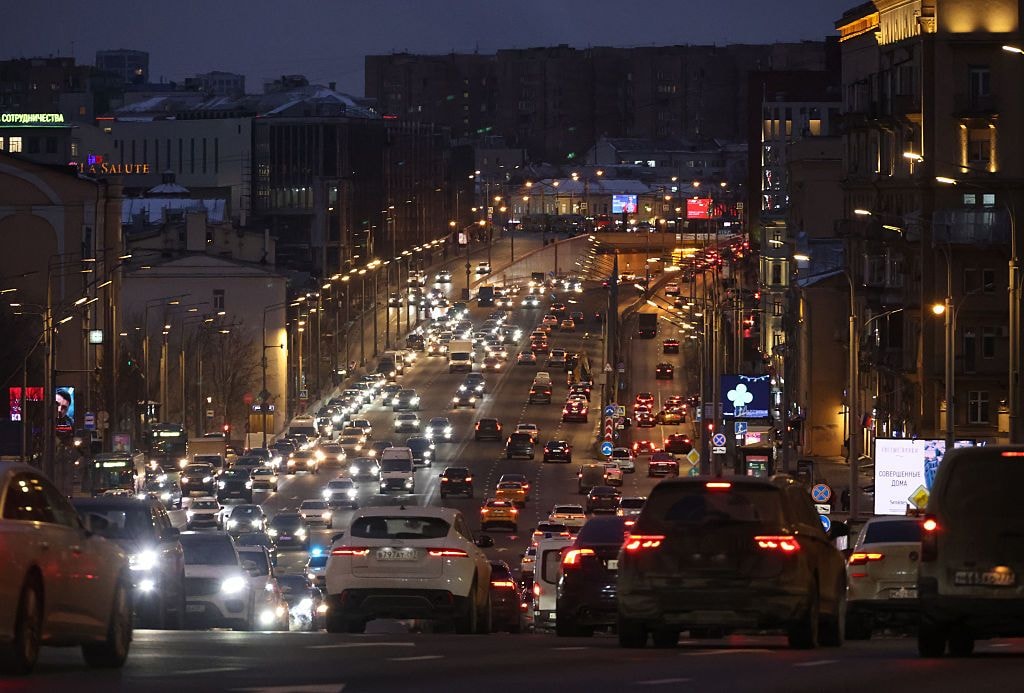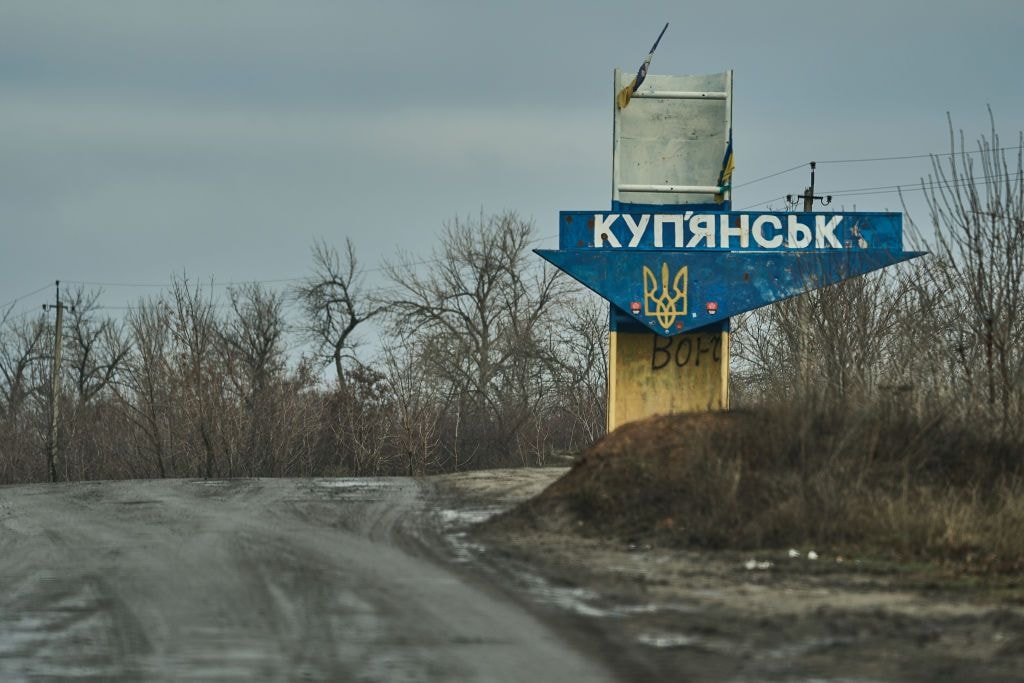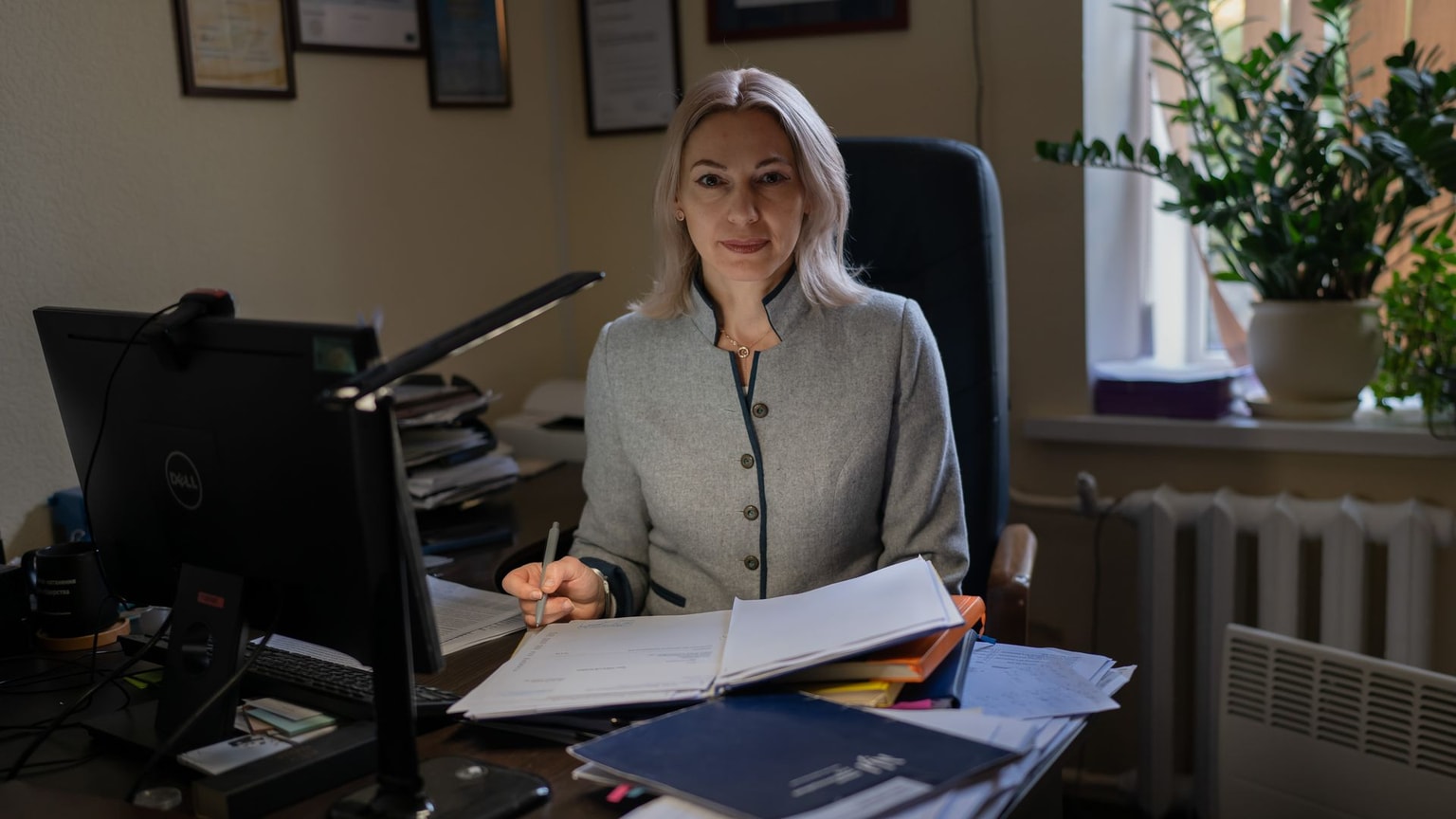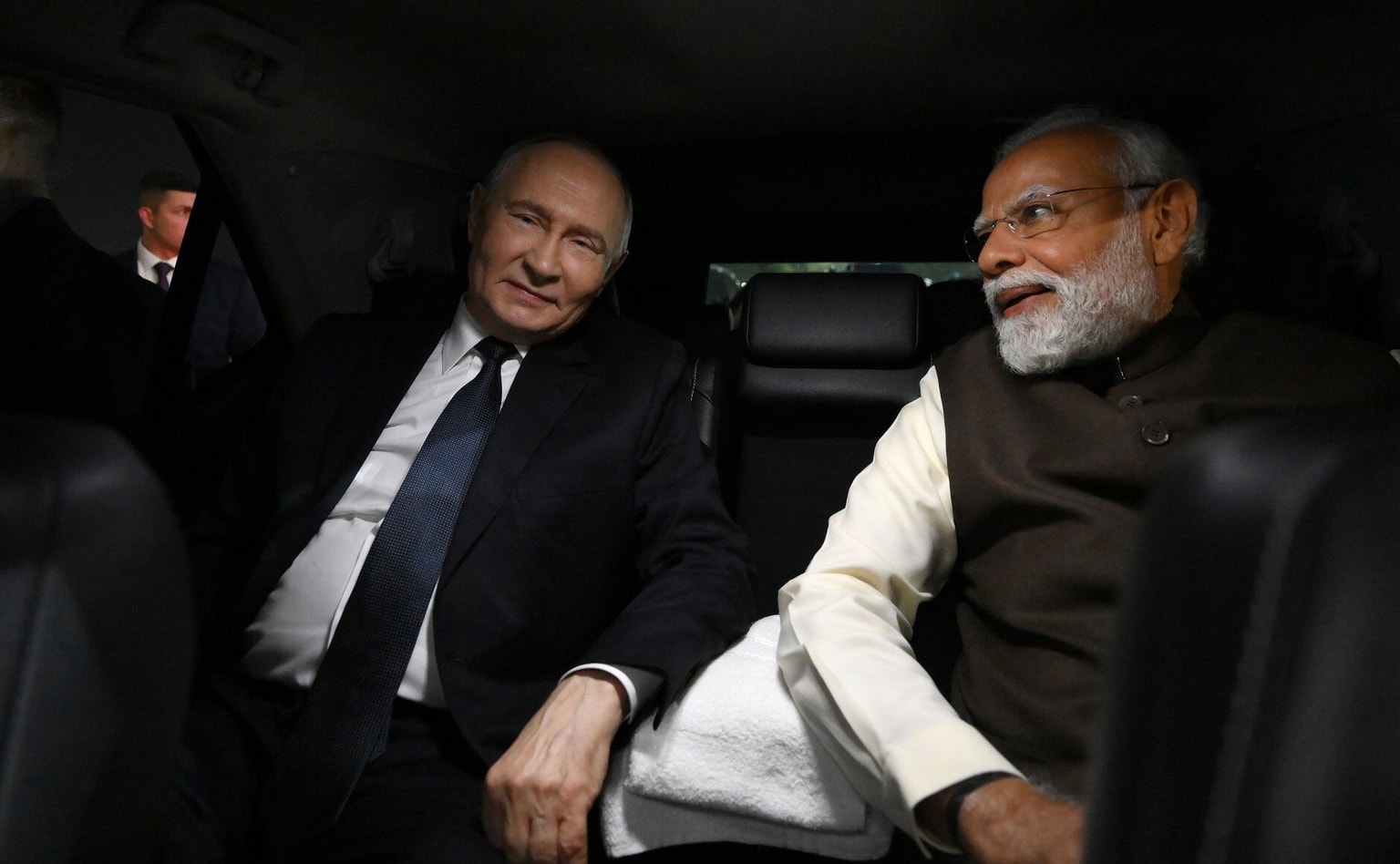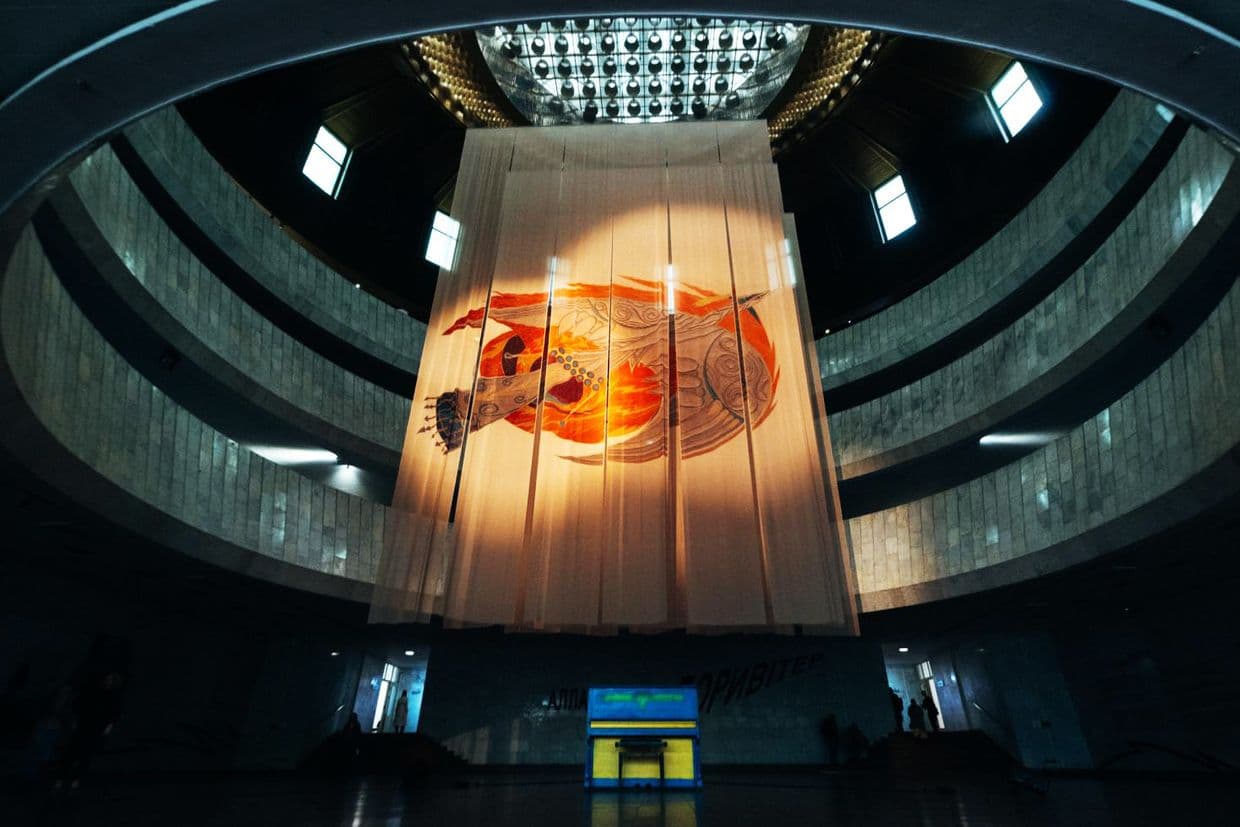
Opinion: Ukraine’s avant-garde legacy battles against persistent destruction
Ukraine's avant-garde artistic legacy endures through generations, battling cultural repression and war, as efforts to preserve and reclaim its rich heritage continue amid ongoing destruction.
"Alla Horska. Boriviter", dedicated to the life and work of the Ukrainian monumental artist Alla Horska. (Ukrainian House International Convention Center)
On a recent trip to Kyiv, I was fortunate enough to join a tour of the city led by Olena Zaretska, the granddaughter of the legendary Ukrainian artist and dissident Alla Horska. Horska was part of a generation of young writers, artists, and intellectuals who challenged the repressive cultural atmosphere of Soviet Ukraine in the 1960s and eventually paid a high price for their defiance. Some were banned from working, others imprisoned, and some – like Horska – murdered by the state.
The Soviet Union’s violent response to artistic defiance wasn’t new in the 1960s. One of Horska’s “crimes” had been to seek out traces of artists and writers purged in the 1930s. She, poet Vasyl Symonenko, and theater director Les Taniuk discovered a mass execution site at Bykivnia, on the outskirts of Kyiv. They knew they had found it when they saw children playing with a skull in the woods.
The soil at Bykivnia contained the remains of avant-garde writers Mykhail Semenko and Mike Yohansen, influential artist Mykhailo Boychuk, and many others. Of the trio who made this gruesome discovery in the early 1960s, only Taniuk would survive. Symonenko was beaten to death in 1963, and Horska was murdered in 1970.
Horska, Taniuk, and their dissident circle didn’t restrict themselves to seeking traces of the dead. In Kyiv in the early 1960s, some leading artists of the 1920s were still alive, holed up in their apartments, all but forgotten.
Zaretska’s tour group stopped outside an unassuming 1950s housing block in central Kyiv – this was the former home of Anatol Petrytskyi, a central figure in the Ukrainian avant-garde of the early 20th century. His work was shown at the Venice Biennale in 1930 and later exhibited in the U.S. Most of his fellow artists, like his close collaborator, theatrical genius Les Kurbas, had been murdered, but Petrytskyi survived. He died in 1964, his post-war career a faint echo of his early success. However, in his final years, he was moved to find himself rediscovered by a new generation once again pushing artistic and political boundaries.
“He spoke with tears in his eyes,” Zaretska told us, standing outside the hip coffee shop that now neighbors Petrytskyi’s old home, “about the hundreds of works of his that the authorities had simply destroyed.”
The conversations in Kyiv apartments of the early 1960s, between those repressed under Joseph Stalin and those soon to be beaten under Leonid Brezhnev, are part of a pattern in Ukrainian cultural life. Each generation salvages the works and memory of the previous one, while constantly fending off renewed attacks.
This cycle continues today: a groundbreaking exhibition of Horska’s work at Kyiv’s Ukrainian House Arts Centre took place in early 2024, in defiance of constant Russian air raids. Not long before, stunning murals by Horska, recently rediscovered by contemporary art historians under newer layers of paint and plaster, were destroyed by Russian missile attacks in eastern Ukraine. Regional art museums across Ukraine have been hit by Russian bombs or, as in the case of Kherson, looted by occupying forces.
Perhaps one of the most powerful acts of heritage preservation in the face of Russia’s war is the exhibition “In the Eye of the Storm,” which has toured Madrid, Vienna, and Cologne, and is now at London’s Royal Academy of Arts. The exhibition features important works of modernist art produced in early 20th-century Ukraine, mostly from Ukrainian collections. In late 2022, they were evacuated in secret by train via Poland, under Russian bombardment.
“We loaded the trucks with the paintings and sent them on their way with a military convoy and state guarantees instead of insurance,” curator Konstantin Akinsha told ArtNews. After narrowly avoiding Russian missiles and navigating border closures, “by some miracle, the trucks arrived in Madrid on time for the exhibition.”
The achievements of the team behind the exhibition (curators Akinsha, Katia Denysova, and Olena Kashuba-Volvach, National Art Museum of Ukraine director Yuliya Lytvynets, among others) were not only in preserving the physical works but also in reclaiming their story. After decades of being written out of art history, Ukraine’s artistic heritage must be reimagined and reclaimed. The place of Ukrainian cities – Kyiv, Kharkiv, Odesa – in the history of European modernism needs to be fully established, and the complex identities of Ukraine’s artists recovered.
This is difficult, given the dominance of the “Russian avant-garde” label, which obscures the identities of many artists from the imperial borderlands. Kazymyr Malevych, perhaps the most famous figure in the exhibition and a native of Ukraine, was known to his Polish parents as Kazimierz Malewicz. He worked in Belarus, Russia, and Ukraine and was deeply influenced by the Ukrainian context (he even sometimes referred to himself as Ukrainian).
Another star of the exhibition, Alexandra Exter, was born in what is today Poland to a Belarusian-Greek family and spent time in Kyiv, Paris, Moscow, and St. Petersburg. “In the Eye of the Storm” avoids the trap of nationalizing these artists; its subtitle is “Modernism in Ukraine,” not “Ukrainian Modernism.” Denysova notes that these artists worked with a “twofold agenda”: to assert Ukraine’s cultural autonomy while also engaging with international artistic trends.
The exhibition also highlights important, yet often neglected, cultural dialogues within Ukraine. The brief period of Ukrainian independence after 1917 was a time of cultural rebirth not only for Ukrainians but also for Ukraine’s Jews. While Ukrainian artists founded the Ukrainian Academy of Arts, Ukraine’s Jews created the Kultur Lige, an artistic organization aiming to forge a new Jewish culture for the modern world.
“In the Eye of the Storm” emphasizes this connection between these movements by juxtaposing two large canvases: Anatol Petrytskyi’s “The Invalids” (1924), depicting a family of disabled beggars, and Manuil Shekhtman’s “Jewish Pogrom” (1926), portraying a Jewish family recovering from one of the many anti-Jewish pogroms in Ukraine.
The striking similarity in the bold scale, powerful figurative work, and deep empathy of the pieces reflects their shared roots. Petrytskyi and Shekhtman studied together at the Kyiv Art School in the 1910s; their teachers there later helped found the Ukrainian Academy of Art. The influence of one of those teachers, Mykhailo Boichuk, who famously synthesized Ukrainian Byzantine iconography with modernist aesthetics, can be seen clearly in the stylized figures of Shekhtmen’s grieving pogrom victims.
Neither the Ukrainian Academy of Arts nor the Kultur Lige lasted long; both were absorbed into Soviet institutions within a few years of the Bolshevik takeover of Ukraine, and both modernist projects were annihilated by Stalin’s purges. In the 1930s, hundreds of writers, theater directors, and artists were labeled bourgeois nationalists and executed. Many more were imprisoned, and their manuscripts, books, and artworks destroyed.

Symbolic of this destruction is one of the most striking paintings in the Royal Academy exhibition: Petrytskyi’s portrait of futurist poet Semenko, who was shot by the NKVD in 1937 and buried in an unmarked grave at Bykivnia. The portrait was part of a series of one hundred images that Petrytskyi made of leading figures of the Ukrainian avant-garde movement. The fate of this series is a microcosm of the tragedy of cultural life in early 20th century Ukraine: only nineteen of the original one hundred survived.
It is difficult to maintain artistic institutions in regions under the control of aggressive empires, but Ukraine’s artistic legacy has repeatedly fought back and thrived despite every colonial assault by Russia. This multi-generational salvage operation ensures that art lovers worldwide can appreciate Ukrainian modernism.
Yet the story of survival is inseparable from the story of destruction. The joy of seeing Petrytskyi’s work in London is tempered by the knowledge that many of his works were lost forever. Similarly, the thrill of seeing Horska exhibited in Kyiv is overshadowed by the destruction of her murals in Donetsk by Russian shelling. Ukraine’s lost avant-garde artworks could fill an exhibition space far larger than the one at the Royal Academy.
The storm, clearly, is not over.
Editor’s Note: The opinions expressed in the op-ed section are those of the authors and do not purport to reflect the views of the Kyiv Independent.



